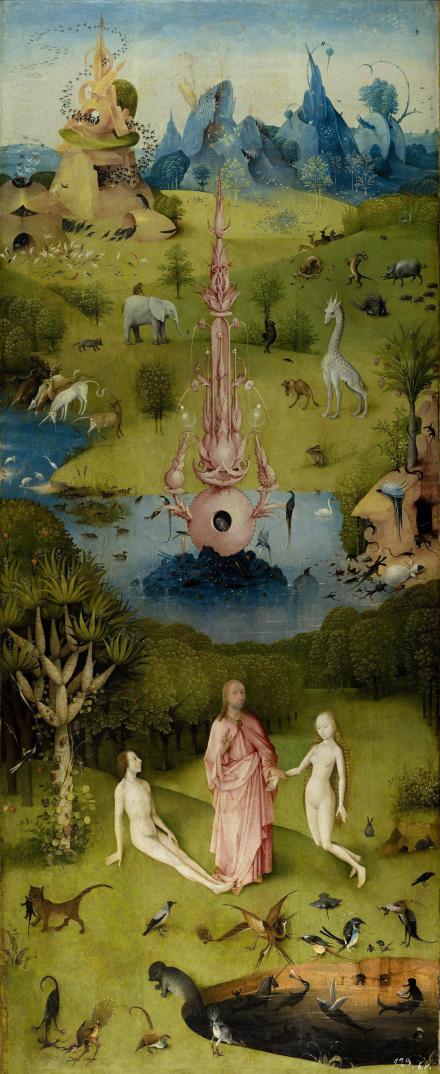[The Leaven – exploring the relationship between science and religion (cont)]
Common arguments by creationists against evolution theory are if humans evolved from apes why have apes not evolved and how is it possible that life on Earth is so diverse even in similar habitats? One explanation could be that even though life looks diverse all of it is encoded from just four nucleotides.
Nucleotides play an important role in several biological functions, including metabolism, but they are mostly known for being the base units thymine (t), adenine (a), guanine (g), and cytosine (c) in DNA. When arranged into predetermined DNA sequences, nucleotides can have very similar patterns even in organisms that appear morphologically different. In fact, although humans may seem to look very different from chimpanzees there is only a 1.23% difference in nucleotide divergence.
Science has become an ever-advancing, voracious creature, forever trying to satisfy a relentless appetite of knowledge and discovery. Whereas, religion treads warily, fearful of disrupting the balances of nature that are governed by laws preceding civilised life. Like a badly matched couple, these two different entities seem to have drifted further apart, but at one time they were closely entwined. Theologians were once dedicated to deciphering Gods laws. They believed that unravelling these may reveal why life exists and to what purpose it served. For instance, in the 19th century the Augustinian friar Gregor Mendel was equally committed to religious endeavour as he was to scientific investigation. By breeding and statistically recording the colour and shape of peas, Mendel was foremost in discovering that characteristic traits were inherited. He was the first to record genetic variation. It is this same variation that enables some members of a species to follow different evolutionary routes.
Advances in science at the molecular level have further reinforced Mendel’s experimental work. The mechanisms of molecular evolution attribute the blueprint of characteristic traits to nucleotide code which, when inherited by offspring, leads to the generation of tissues that cumulatively construct a new individual with parental characteristics. Genetic diversity exists to strengthen the gene pool, allowing the plasticity needed to evolve. If there were no nucleotide diversity between individuals there may be no life, as variation gives organisms the ability to survive changing environments.
Comparing the nucleotide variation in protein encoding genes from a variety of organisms reveals a distinct evolutionary history. This complex science, known broadly as Molecular Phylogenetics, can involve the comparison of huge amounts of electronic data, sometimes reaching many terabytes in volume. The human genome alone is composed of over three billion nucleotide pairs that contain thousands of repeated regions and single-nucleotide variations or polymorphisms, also known as SNPs. Molecular phylogenetics allows species to be characterised into orders and families not only through physical similarity but also through the arrangement of their nucleotides.
In the book of Genesis, plants were created first, birds and fish appeared on the fifth day, with other animal life, including humans, arriving on the sixth. The order in which animals appear corresponds roughly with evolution theory, fish and birds being more primitive in genetic terms than mammals with humans appearing later. According to the Bible, humans were put on Earth to control the animals that existed in the land and sea, with females being cloned, by the Almighty, from male bone tissue. The genus Homo is thought to have diverged from other primates fairly recently, within the last four to five million years. Therefore, humans are also considered to be at the top of the phylogenetic tree. There is no mention of microbes in the story of creation as their existence only came to light with the advent of microscopy in the last few centuries. Evolutionary speaking they would appear before plants.
Recent developments in faster high-throughput DNA sequencing techniques, whereby hundreds of DNA strands are sequenced simultaneously on microchips, have enabled whole genomes of organisms to be sequenced at a fraction of the time and cost. The human genome sequence was completed in 2003 using older methods developed by Sanger in 1980. It took more than 3,000 scientists 13 years to complete and cost of over three billion dollars. Currently a human genome can be sequenced within weeks for under fifty thousand dollars. Consequently, nucleotide pattern variations from thousands of genomes in a large number of species are being compared at an accelerated rate using SNPs and other molecular markers to further refine theories of evolution. A major focus of these studies in human genomes is the identification of variation that gives rise to genetic diseases such as cancer. If a small variation in the usual DNA of the human genome can lead to a disease altering the survival of an individual then, understandably, it could give raise to variation that can increase survival too. In the beginning perhaps God created nucleotides, the rest is evolutionary history.




